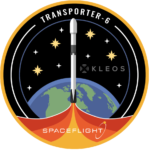NASAspaceflight.com describes the mission as follows, “This was the sixth dedicated rideshare mission organized by SpaceX and carried 114 payloads into orbit — some of which will be deployed later from a number of space tugs that are on the mission. The payloads range in size from picosatellites of less than a kilogram — measuring only a few centimeters on each side — to microsatellites massing around 100 kg.
The Transporter missions are intended to provide a consistent cadence of rideshare opportunities to popular orbits such as Sun-synchronous orbit (SSO). As with many other satellite missions in 2022, the Transporter-6 launch date slipped from its original October 2022 target, ending up at the beginning of 2023. There are three additional Transporter missions scheduled for 2023, launching in the first, second, and fourth quarters of the year.”
Space.com added more detail in its post, “Transporter-6 is SpaceX’s sixth dedicated small-satellite rideshare mission. The 114 payloads on the flight include cubesats, microsats, picosats and orbital transfer vehicles carrying spacecraft to be deployed at a later time. Three dozen of those cubesats are “SuperDoves,” Earth-observing satellites the size of a loaf of bread built and operated by the San Francisco-based company Planet.
Among the many satellites flying on Transporter-6 are six craft that will be operated by Virginia-based space analytics company Spire Global, as well as EOS SAT-1, the first spacecraft in a seven-satellite, agriculture-focused constellation planned by EOS Data Analytics (EOSDA).”

Please refer to SpaceX Rideshare site for details…
https://www.spacex.com/rideshare/
(Please know this link will take you to an external website.)
Blog Comments/Suggestions – please contact Jim Niemes, Treasurer NSCFL, at Logical Innovations, Inc., jniemes@logical-i2.com


 Home
Home